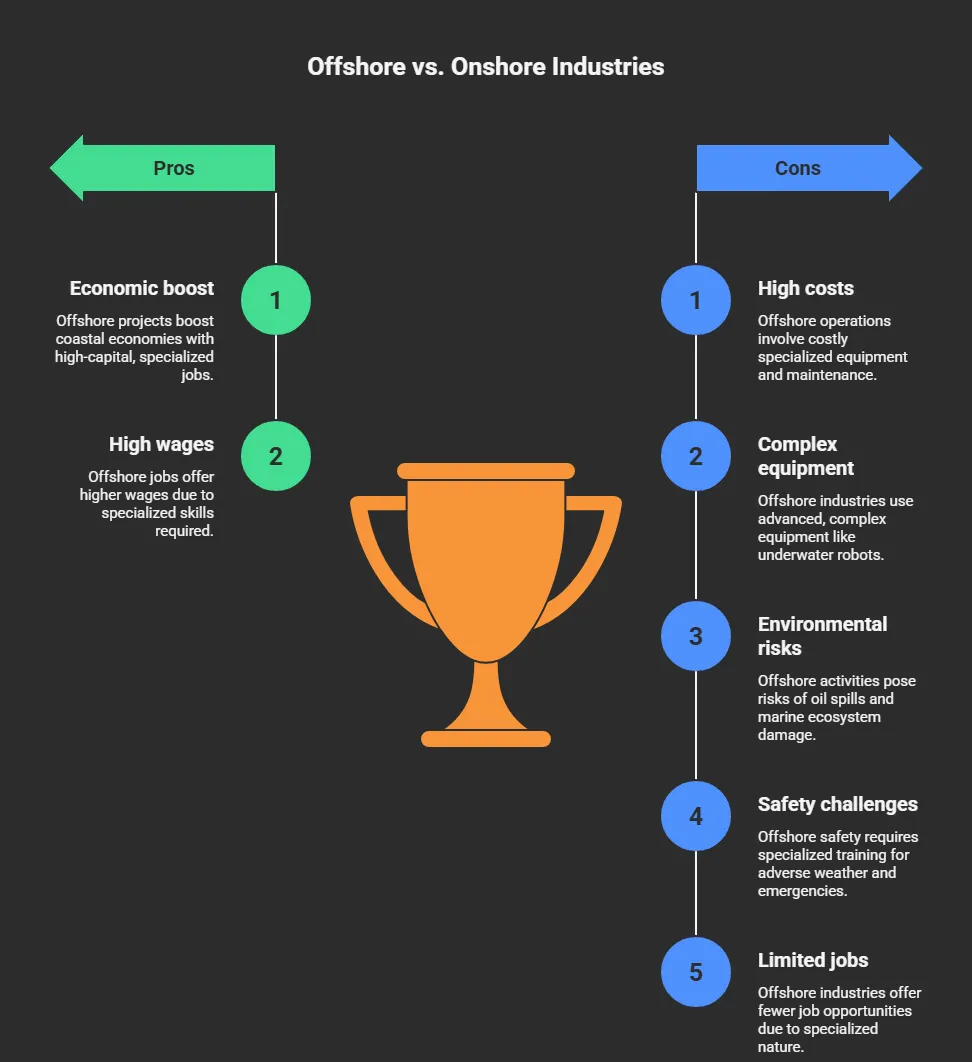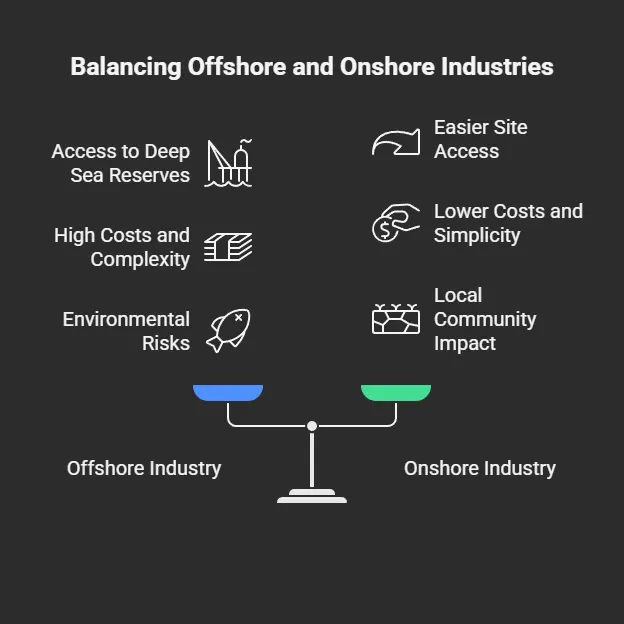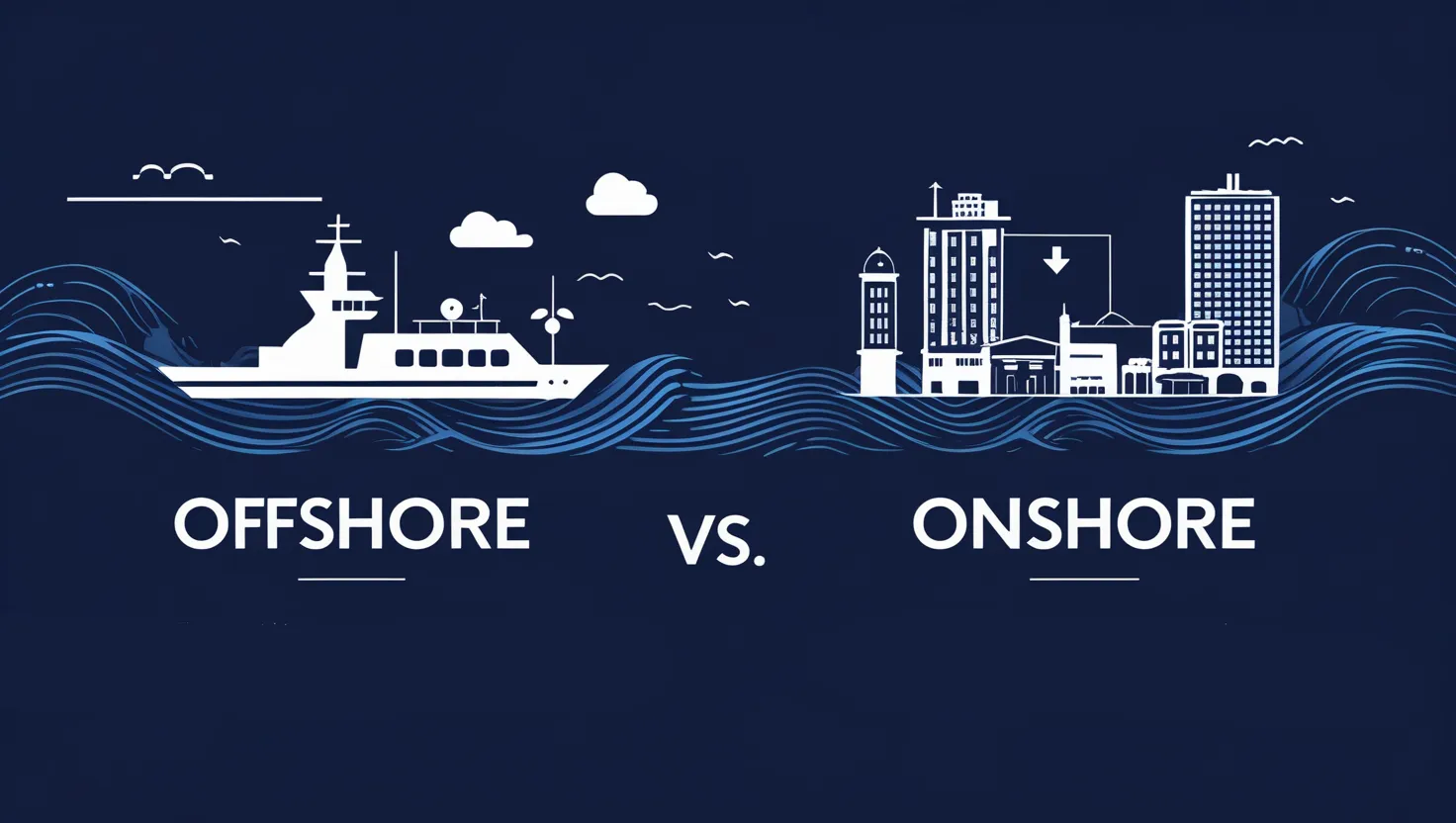The oil and gas industry is one of the main sources of income for any country and one of the most important sectors of the global economy. This industry is divided into two categories: offshore and onshore.difference between offshore and onshore categories are based on the location of the industry. These two methods have fundamental differences in operational methods, technologies used, challenges, costs and environmental impacts, which is what distinguishes them from each other. We will continue to examine these two categories in detail.
Offshore Industry
The offshore industry is an industry that operates in sea and ocean environments. In this industry, activities such as identifying, extracting and producing natural resources (especially oil and gas) are carried out in these environments. Examples of oil platforms, drilling rigs or wind turbines are located on shallow or deep shores and are active, and after extracting oil and gas, they direct these valuable items to the shore through embedded pipes.
Onshore Industry
Like the offshore industry, the onshore industry is also an industry related to activities related to the exploration, extraction and production of natural resources, but with the difference that it is carried out on land or in areas close to the coast. Oil and gas fields on the surface of the earth are an example of the onshore industry.

The difference between offshore and onshore industries
Offshore and onshore industries have many differences, and we will discuss the most important of these differences below:
- Geographical location and access: Offshore industries are often located in marine and offshore environments, and to access these industries, you must use a ship or helicopter to access these industries. While onshore industries are located in places on land and on land, and you can access these industries via roads, paths, and railways, and as a result, you need less money to access onshore industries and access is much easier.
- Operating costs: Operating costs in offshore industries require specialized equipment, complex and specialized equipment such as offshore platforms, floating rigs, and technologies resistant to marine conditions, which have higher installation, maintenance, and repair costs due to their location and location. While the cost of operations on land is much lower and in these industries you do not need to use complex equipment and the infrastructure of these operations is very simple.
- Equipment and technologies: In the offshore industry, the owners of these industries use advanced equipment such as subsurface drilling systems, floating platforms and underwater robots. In this industry, equipment that is resistant to high pressures, seawater corrosion and harsh weather conditions must be used, but the equipment used in onshore industries is much simpler and consists of equipment such as land drilling rigs, extraction pumps and pipelines, and these technologies are more standardized and of course less expensive.
- Environmental challenges: These challenges are abundant in offshore industries. In offshore industries, there is a possibility of oil spills at sea, which has negative impacts on marine ecosystems, and waste management challenges, which in itself brings many challenges, with many strict laws being applied in this field. Onshore, there are also environmental impacts such as land degradation, soil and groundwater contamination, and impacts on local communities, which are much easier to manage and control than in offshore industries. .
- Safety and operational risks: Safety is very important when working in marine environments due to the challenges that exist. Adverse weather conditions, the risk of platform sinking, and emergency evacuation challenges are among the issues that require specialized training to deal with these issues. In onshore industries, there are also risks such as fire and explosion, but evacuation and access to emergency services are easier in onshore industries.
- Economic and employment impacts: Offshore projects are complex and specialized projects that usually require a lot of capital and people who specialize in this field have higher wages. These projects can strengthen the economy of coastal areas, but because these are specialized jobs, you will see a limited number of these industries. Onshore industries have lower costs due to their location and easier access and create jobs for more people and strengthen the economy of the region.

Examining the advantages and disadvantages of offshore and onshore industries
In the offshore industry, the owners of these industries can access the huge reserves of oil and gas in the deep sea that are not found on land and, using new technologies, they cause innovation in various industries and cause land loss and environmental problems on land. However, this industry also has disadvantages, including high costs and logistical complexities, high environmental and safety risks, dependence on weather conditions, and operational restrictions during storm seasons, which create limitations.
Compared to the offshore industry, the onshore industry has lower costs and easier access to sites, simpler infrastructure and the possibility of using local labor and easier management of waste and environmental impacts. However, this industry also has disadvantages, including limited access to deeper reserves, direct impacts on local communities and agricultural lands, and the need for careful management to prevent soil and water pollution, which should be given close attention.
Onshore or Offshore Industry??
Different criteria affect the choice between the offshore and onshore industries. Various factors such as financial resources, access to technology, the geographical location of oil and gas fields, and environmental laws all affect this choice, and individuals must decide according to their situation and budget. Oil and gas companies usually use both methods simultaneously to optimize production and reduce costs in order to access more reserves by managing costs.
Offshore and onshore industries are among the industries that have a direct impact on the economies of countries and have fundamental differences in costs, technologies, challenges and environmental impacts. In the offshore industry, one gains access to resources in larger volumes by using advanced technologies, but this method has high costs and risks, and is lower than onshore costs and risks. Individuals choose the most appropriate option based on their circumstances. Fidar Animation is a specialized group in creating animations for specialized industries such as oil and gas, etc., which accompanies you in project stages such as safety training for personnel, project interaction and review, project introduction in seminars, exhibitions, etc., attracting target audiences and investors, marketing, etc. with high details and accuracy and realistic and dynamic images. For more information, advice and to see our portfolio, contact our experts.
